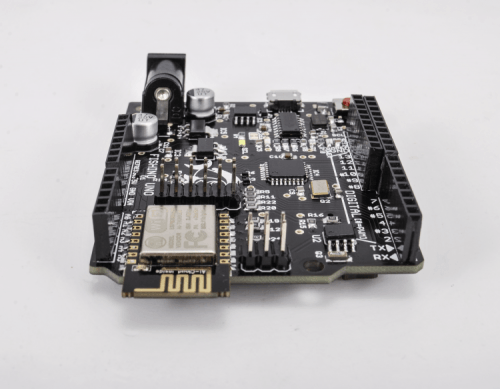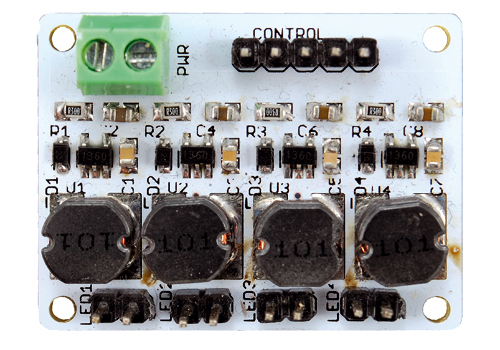
This post is especially for Arild, an inmate at another institution – currently on leave.
This post began to emerge after Arild sent an email to Billi Sodd about Modesty, a series of 8 paintings depicting seven generations of (western) women dressed in beach wear at 20 year intervals from 1910 to 2030. Since 2030 is still well into the future, two choices were offered – the minimalistic, with the wearer dressed in a hat, and the maximalistic, with clothing resembling that of a burkini. Here is a translation of that letter:
“In the name of modesty, you have made a very daring piece of art. The idea and execution are good, but you must remember that there are some groups in the country that may feel offended by what you present here. Even I am a religious teacher at an academy in the county and raised in Western Norway, so I am highly provoked, and thus violated when I see a woman in microbikini. My many Muslim friends will consider it almost blasphemous to equate their decent Burkini dressed women with the West Decadent and Sexualized Women’s Idea.
Art’s essence is to be provocative, so you’ve succeeded with your artwork. Congratulations! But: Is it all art that benefits, has the limits of freedom of expression? I give you a good advice, dear apprentice painter: If you want to keep your head, do not try to show the two futuristic paintings to an Imam or other Muhammadans. Even I am :raised in a Protestant spirit, and then you will meet a provocator with understanding and respect, but not necessarily with acceptance. As mentioned, the artwork is well done and you have shown good color understanding. I want to take this opportunity to recognize your talents in the subject. I look forward to further contributions in your further artist career, be aware of the choice of themes.”
Billi admits that his intention was to provoke. His work begs the question: What are the limits of propriety? It goes beyond beachwear. It goes beyond clothing. I have considered painting a second series, with a focus on men, but not in terms of clothes. That’s because men dress in cars. The sportscar is the male equivalent of the female microkini. Of course, this series would have to feature 1957 – most probably a Chevrolet. I am considering the years: 1897, 1917, 1937, 1957, 1977, 1997, 2017 and 2037.

Despite believing in God, and being a member of a religious community, I have an appreciation of the atheistic feminist movement, Femen. Their grievances with established religion are largely justified. Scandals emerge almost daily to prove their point. At this stage in human development, I can support large portions of the Femen manifesto, including:
“FEMEN Ideology: Atheism […] FEMEN’s Objectives: church – by putting these institutes through subversive trolling to force them to strategic surrender. […] FEMEN’s Requirements: to universally and completely separate the church from the state and to prohibit any intervention of the religious institutions in the civic, sex and reproductive lives of modern women.”

This post was updated 2021-12-30 at 17:00 with the following
Shanzhai by example

Billi Sodd is a persona representing an older prisoner with issues, yet in the process of developing himself to become a(n artistic) painter. Since he is learning, he refers to himself as an apprentice, rather than a journeyman or a master. Like everyone, he was imprisoned by his past, until he decided to break free of it. Yet freedom is a relative term. At the most fundamental level, no living human is free to stop breathing. Every person is a slave to biological imperatives.
Billi’s most significant work so far, Anstendighet/ Modesty, consisted of 8 paintings. These paintings are based on a single template, a stencil. They deliberately imitate cartoons with large patches of solid colour, and an absence of shadows. Anstendighet/ Modesty was made in 2015, and shows how the western concept of modesty has transformed itself during during a period of 100 years. It consists of six paintings showing a young (ca. 20 years old) adult women at twenty-year, generational intervals from 1910 to 2010, each dressed in bathing costumes of the time. In addition, there are two additional paintings, variations on this theme, showing potentially more extreme changes for 2030, labelled 2030 Mini and 2030 Maxi.
The so-called originals were given to Verdal prison. However, a reworking of the subject is planned, with the goal of releasing high-definition images, so that anyone could make their own giclée prints using ink-jet printers. As long as the printing instructions are followed, these prints would be regarded as equals to the original paintings. If the instructions aren’t followed, something even better than the original may result.
In many ways Billi is an antithesis to protesters in these COVID-19 times, who want to open society faster, pressing R0 (in this case the viral net reproduction rate) values to greater heights. It is disheartening to see people like Elon Musk complaining about the shutdown of Tesla’s Fremont factory. He seems to have forgotten the lesson learned from a childhood reading of Isaac Asimov’s Foundation series, reported by Neil Strauss, “you should try to take the set of actions that are likely to prolong civilization, minimize the probability of a dark age and reduce the length of a dark age if there is one”.
An invitation to the original showing of Billi Sodd’s work Anstendighet/ Modesty (in Norwegian and English) in 2015 can be downloaded using the download button below. VF refers to Verdal fengsel = Verdal prison.
In 2020, Billi is considering a new series, PPE, based on current experiences of COVID-19. No decision has been made regarding the number of paintings. It could be as few as two. One showing protective measures taken during the 1918 Spanish flu epidemic, as well as the current one. A third, simply showing a child hiding under a school desk, and titled nuclear attack, could refer to events in the early 1960s.
After this re-emergence, Billi Sodd next appearance is expected to be a celebration of Billi’s permanent release from Verdal prison at a Halloween party to be given on Tuesday, 2028-10-31. The theme of this party will be shanzhai. Mark that date on your calendar now!Anstendighet VFDownload
Here are three additional relevant quotations from Han’s book.
“In the Buddhist notion of the endless cycle of life, instead of creation there is decreation. Not creation but iteration, not revolution but recurrence, not archetypes but modules determine the Chinese technology of production…. Foremost in modular production is not the idea of originality or uniqueness, but reproducibility. Its aim is not the manufacture of a unique, original object but mass production that nevertheless allows variations and modulations.” (p. 35)
“Shanzhai products often have their own charm. Their creativity, which cannot be denied, is determined not by the discontinuity and suddenness of a new creation that completely breaks with the old, but by the playful enjoyment in modifying, varying, combining and transforming the old.” (p. 40)
“The creativity inherent in shanzhai will elude the West if the West sees it only as deception, plagiarism and the infringement of intellectual property.” (p. 41)
Closing thoughts: People’s transformational abilities, that is, a competence to alter/ convert/ reconstitute raw components into something useful, are to be applauded. Take the steam engineer, who is able to extract latent energy found in assorted solids, liquids and gasses and mould it, so that it works for the benefit of humankind: moving train cars, drying lumber, generating electricity. Take the weaver, who is able to take flax (from Linum usitatissimum) or fleece (from Ovis aries) and transform it into cloth. Take the programmer who, using a simple vocabulary, instructs a computer to manipulate data to provide and display meaningful information.
For further information about early Chinese printing and related activities, see: The History and Cultural Heritage of Chinese Calligraphy, Printing and Library Work (2010, ISBN: 9783598220463), a publication of the International Federation of Library Associations and Institutions, edited by Susan M. Allen, Lin Zuzao, Cheng Xiaolan and Jan Bos.
Yang Jianxin writes that “According to the historical records, wood blocks for printing started in the Tang Dynasty (618–907 A.D.). During that time in the center of Zhejaing Province, a book store sold the collected poems of Bai Juyi and Yuan Zhen in an edition printed by wood blocks.” (Allen et al, p. 26)






